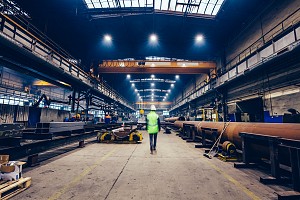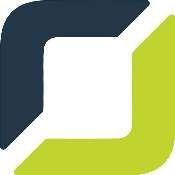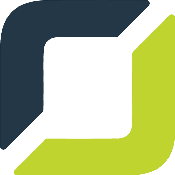To ensure that a manufacturing business runs well, managing the shop floor, stocks, operations, and scheduling is crucial. As production and supply chains grow to meet growing global demand, real-time data and software solutions allow manufacturers to automate processes and make data-driven choices.
MRP (Material Requirements Planning) and ERP (Enterprise Resource Planning) are two commonly used software systems. This article details each software system’s benefits, when your organization might need an ERP or MRP system, and how these programs can simply interact to help you operate your company successfully.
Companies like Orases offer a variety of benefits when it comes to manufacturing. Keep reading to learn more about MRP and ERP in manufacturing, and discover why each can be beneficial to your company.
The History of MRP and ERP Solutions
 Before we dive into details on what an ERP and MRP are, and how each can be beneficial, it is important to have a comprehensive understanding of their history. Although the Gartner Group coined the word “ERP” in the 1990s, ERP systems have their origins in the manufacturing sector and can be traced back to the MRP systems created more than 60 years ago.
Before we dive into details on what an ERP and MRP are, and how each can be beneficial, it is important to have a comprehensive understanding of their history. Although the Gartner Group coined the word “ERP” in the 1990s, ERP systems have their origins in the manufacturing sector and can be traced back to the MRP systems created more than 60 years ago.
The 1960s saw the development of computer technology to the point where it could meet the needs of manufacturers who required a better way to organize, track, and control their inventory.
To fulfill the needs of manufacturers, fundamental software programs known as MRP were created. In addition to extremely basic manufacturing, purchasing, and delivery tasks, these systems assisted manufacturers in keeping track of inventory and balancing accounts. So, what actually is an MRP and ERP?
What Is A MRP System?
The basic objective of MRP solutions is to determine and measure the required production materials and when they are needed, making them particularly useful within the industrial sector.
This makes it possible for manufacturers to prevent downtime-related productivity loss. MRP systems are also useful for production planning even in organizations whose major duties are not in manufacturing. As a result, production schedulers can estimate demand, order the right materials, and maintain the right amounts of inventory using this program.
Market and consumer developments have shaped MRP over time. Manufacturers used to either produce their own parts or source them locally. Mass production was the norm; customization wasn’t a top goal. Instead of depending on price wars to acquire clients, manufacturers had to offer more specialized items as worldwide competition between businesses grew.
These new items had more features and needed new services, necessitating a new method of production management to meet the demands for a quicker time to market and an increase in product complexity. Orases offers help with a variety of MRP systems. Here are some of the main objectives of these systems:
Common MRP Objectives
- Ensuring the availability of the necessary materials for production
- Ensuring that goods are accessible for delivery to clients
- Maintaining materials and finished goods inventories
- Organizing production processes, sales orders, and purchasing
Features of MRP
 These MRP system capabilities, when used correctly, can lower costs and boost productivity. However, for an MRP system to successfully improve manufacturing operations, data must be entered into it accurately. Incorrectly entered data will ultimately skew planning and ordering. The most common features of MRP are:
These MRP system capabilities, when used correctly, can lower costs and boost productivity. However, for an MRP system to successfully improve manufacturing operations, data must be entered into it accurately. Incorrectly entered data will ultimately skew planning and ordering. The most common features of MRP are:
- Stock management
- Production planning
- Supply Chain Management
- Inventory Management
What Is A ERP System?
ERP systems are based on the functionality of MRP II software, and are used to better plan, manage, and automate processes like supply chain management, finances, project management, staffing, and manufacturing.
ERP systems come with a collection of ERP apps that interact with one another to improve the business management of the individual sectors and the entire firm. To handle certain operations, businesses might opt to use specific ERP SaaS (Software as a Service) apps. Additionally, companies can choose between Big-Business ERP and Small-Business ERP, each designed to meet the demands of enterprises of various sizes.
Common ERP Provisions
 Businesses should choose an ERP system that will satisfy all defined criteria, accommodate the quick rate of business change, address emerging technology, and eliminate the need for costly customizations. ERP provisions to consider for your system are:
Businesses should choose an ERP system that will satisfy all defined criteria, accommodate the quick rate of business change, address emerging technology, and eliminate the need for costly customizations. ERP provisions to consider for your system are:
- A comprehensive system
- A standard database
- Operation in real-time
- Support for components and applications
- An interface that is the same across all programs
- SaaS, on-premises, or cloud-hosted deployment
Features of ERP
An organization’s financial well-being and operational procedures can be correctly planned, budgeted, predicted, and reported on with the aid of a manufacturing ERP software system. Businesses may also get a complete picture of all the moving components in their operations thanks to ERP systems.
Companies can benefit from useful cross-application communication with an SaaS ERP solution. Data can be transmitted across applications via shared on-premise databases or the cloud, allowing companies to get a more complete picture of how their operations are working. Following that, ERP software gives users in-depth performance data on how resources are being used, enabling users to make better decisions. Benefits of an ERP system include:
- Cost reductions from automation and integration that boost productivity and efficiency
- Improved oversight and management of regulatory compliance
- Decrease in mistakes made by people and inefficient use of time and resources
- Improved departmental and role collaboration and communication
- Scalable business expansion
- Better management of partners and suppliers
Industries That Frequently Utilize ERP
While many industries could benefit from using ERP in their everyday planning, here are some of the key sectors that could benefit the most:
- Industrial Components and Equipment
- Technology and Electronics
- Health care, pharmaceutical, and life sciences industries
- Food and Drink
- Shopping and Consumer Products
Using MRP and ERP Together
 MRP and ERP work together to streamline corporate processes. An ERP solution’s MRP software functions as a subsystem, providing data on resources and materials to the ERP solution, which combines and uses that data to inform other business departments. For example, a finance department can utilize the data the MRP system sends to the ERP to compute accounts receivable and manufacturing costs to set product prices.
MRP and ERP work together to streamline corporate processes. An ERP solution’s MRP software functions as a subsystem, providing data on resources and materials to the ERP solution, which combines and uses that data to inform other business departments. For example, a finance department can utilize the data the MRP system sends to the ERP to compute accounts receivable and manufacturing costs to set product prices.
Both of these technologies have significantly impacted the industrial sector, helping to boost productivity and efficiency while shortening the production cycle.
Differences Between an MRP and ERP
Now that you have a basic understanding of what each one is, it is important to grasp the difference between the two. ERP systems combine every piece of the complex puzzle that is a manufacturing organization. Data from one area of the company can accurately inform decisions made elsewhere. Having control over the entire process—from the raw material supply to the logistics of delivery—is possible with an ERP system.
However, MRP is primarily a technique used by production and operations teams to manage the purchasing and manufacturing departments of the company to increase efficiency. It enables the production plant to satisfy customer needs while maintaining stock KPIs and making cost-effective purchases.
Since MRP is a standalone piece of software, other departments can access the data, but they won’t be able to link it to their databases. An ERP is designed with total integration in mind, whereas you can frequently integrate MRP systems with other applications by importing and exporting pertinent data.
When Should You Use MRP or ERP?
 If supply chain management is your goal, an ERP system will enable you to achieve total control over the entire process. Since most ERP systems on the market today are modular, you can select which areas (departmental workflows) to connect and, as a result, which modules are required. Furthermore, while using Access, the implementation can be staged so that, if necessary, the relevant modules are purchased and integrated first. This is because not all organizations truly need every module.
If supply chain management is your goal, an ERP system will enable you to achieve total control over the entire process. Since most ERP systems on the market today are modular, you can select which areas (departmental workflows) to connect and, as a result, which modules are required. Furthermore, while using Access, the implementation can be staged so that, if necessary, the relevant modules are purchased and integrated first. This is because not all organizations truly need every module.
MRP would be the logical option for companies that already have software in place for activities that interact with customers, such as estimating, sales order processing, and debtor management, but lack supplier and stock management and production control. Additionally, if production control is a crucial business necessity, but you lack the funding for a full (or partial) ERP system, MRP can be the best option for you. Contact Orases to find out more about industrial software to aid in decision-making.
Key Questions to Ask Your Project Leaders
When considering which system is right for your business, there are some key questions to ask yourself:
Which operations need to be optimized?
An MRP system is specifically made for this purpose, which is to improve manufacturing processes. However, you’ll need ERP software if you want to integrate, automate, and optimize operations beyond just manufacturing, including accounting, human resources, and more.
What limitations are there to the software budget?
MRP systems are less expensive since they are an easier solution. However, you must consider what an ERP system can perform for your company and how it will impact your growth and bottom line before budgeting funds toward it. Many businesses that invest in an ERP system discover that optimizing business processes can boost productivity and efficiency to the point where the system pays for itself.
Is the company rapidly growing?
To succeed and stay up with expansion, a business experiencing significant growth will need to rely increasingly on automation and standardized, streamlined operations. An ERP system is required for this. However, you might only require an MRP tool if your organization is expected to remain stable.
Opportunities With Orases
Each business needs different software solutions to complete its goals. Consider trusting a company like Orases to meet all of your software needs. They have an array of innovative services and MRP & ERP solutions designed to help your company grow and thrive.
To get in touch and get started today, reach out to learn more or schedule an appointment.





